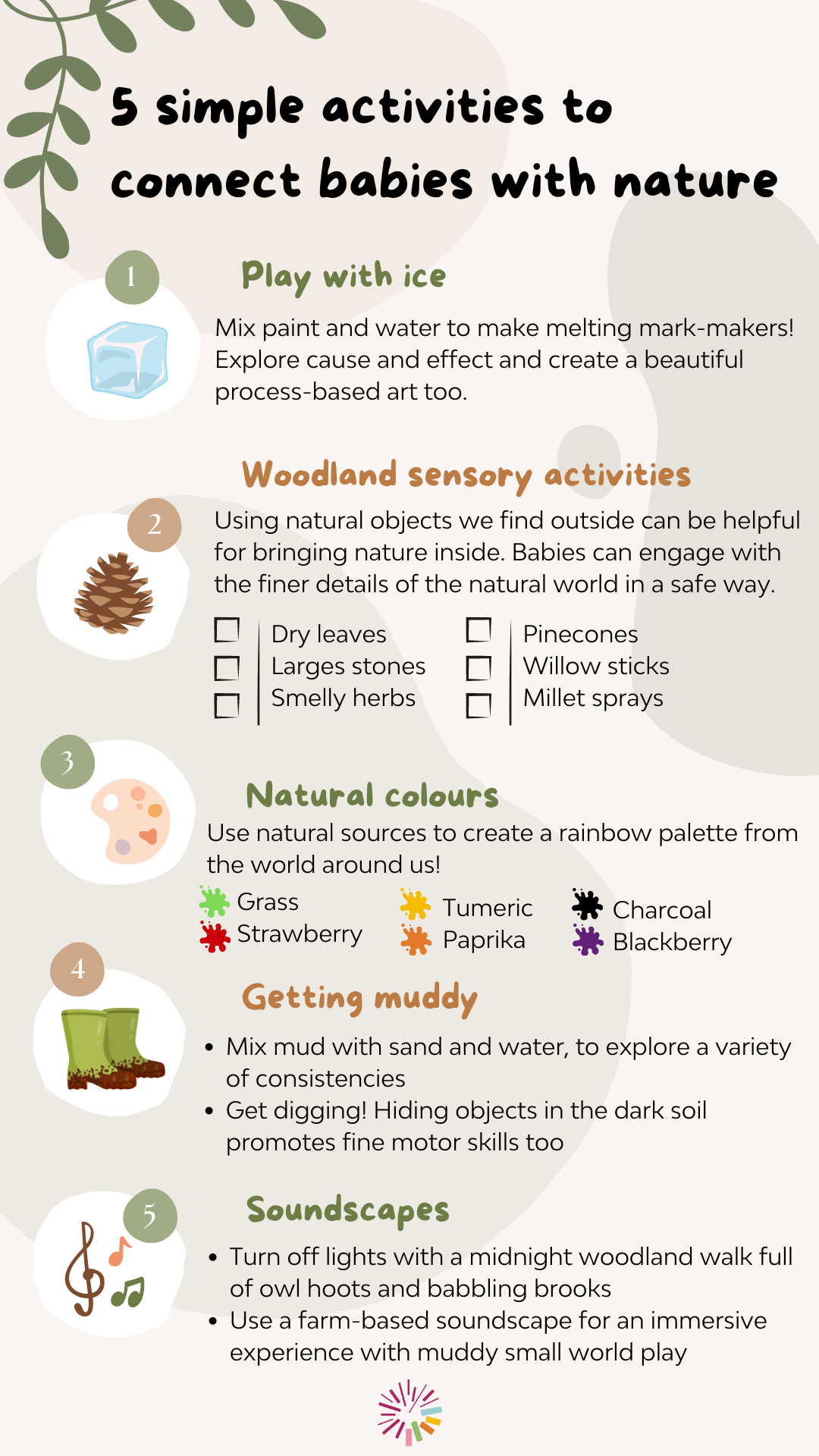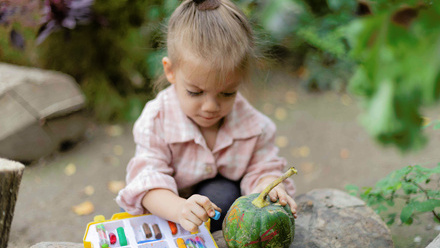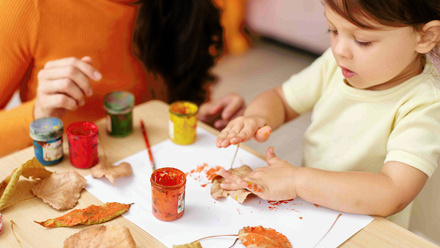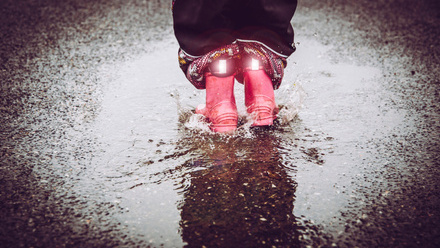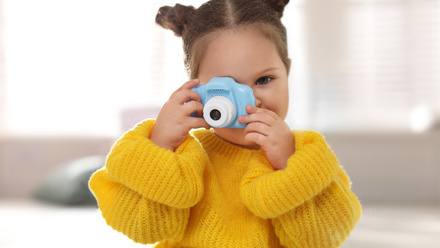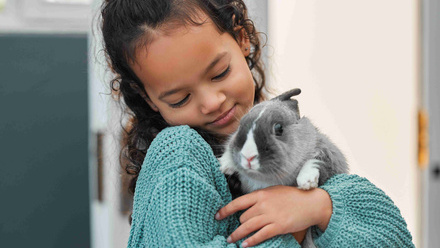5 simple activities to connect babies with nature
Listen to this article on the go.
The natural environment is ever-changing. Every interaction we have is unique and allows us to explore new opportunities we never knew possible… much like working with babies!
A baby’s daily experiences are constantly changing – no two days, interactions or activities are ever the same! This is because of their fascinating brain development: every second, millions of neurons are produced and connections are being made that contribute to the fastest development stage of a lifetime.
Exploring nature is not only a great way to explore the world around us and come to know the seasons as they come and go, but it also offers a valuable opportunity for sensory exploration from the youngest age.
Let’s have a look at some activities to get young children engaged with nature!
Ice
Keep things cool by using ice in sensory play! When we think about how things feel, temperature is an aspect that is often taken for granted. When something is too hot, or too cold, our reflexes tell us to move away.
There are many fascinating ways to use ice in play! Get creative to draw upon other areas of provision that can be frozen up to explore temperature as well.
- Mixing paint with water to freeze makes great melting mark-makers! Babies can explore cause and effect of melting whilst experiencing new sensations to touch and create a beautiful piece of process-based art at the same time.
- Ice cubes that are introduced to a tepid water tray are a great stimulation for exploring the contrasting temperatures and how we respond to them. This can be done simply with water alone or enhanced by adding colouring to the cubes for a visual representation of how the cold things in our grasp melt away.
Woodland senses
Sensory trays and treasure baskets are a long-standing favourite of the baby room. Allowing children to self-select and discover at their own pace, these provisions offer an accessible and interesting way for child-led play.
Using natural objects we find outside can be helpful for bringing nature inside and creating a space for babies to engage with the finer details of the natural world in a safe way.
Some of the items you might consider:
- dry leaves
- pinecones
- willow sticks
- seagrass items
- wooden slices
- large stones
- smelly herb bags
- millet sprays.
Please be careful when selecting items for sensory activities to ensure they are safe and appropriately prepared. Items found outside should be baked at a high temperature or frozen to kill bacteria, whilst size should be considered for choking hazards.
Natural colours
We all love getting colourful and creative! Whilst manufactured paint can give us instant results with little fuss, creating our own unique colours with natural resources make for a fun process for making paints together as well as using them to get creative. Here are a few ideas of what to use to create natural colours:
-
pummelling grass can be used with water to create vibrant greens
-
safe berries, like blackberries and strawberries, can be squashed and mixed with water for brighter red and deep purples
-
spices such as turmeric and paprika can be used to create beautiful yellows and oranges.
Getting muddy
Soil and mud are an easily sourced and low-cost messy play provision that gets children engaged in the world around them, exploring how things grow and where food comes from.
Mud play can be extended far beyond traditional ‘construction zones’ with plastic trucks for more natural sensory enquiry.
- Get mixing by bringing in other textures, such as sand and water, to explore a variety of consistencies.
- Get digging! Hiding objects in the dark soil promotes fine motor skills and a sense of discovery.
Soundscapes
Often, natural sounds like rainfall and woodland sounds are used exclusively for sleep times as a means of relaxation. However, utilising these natural sounds throughout play offers a different sensory element to the learning opportunity.
- Turning off lights and listening to a midnight woodland walk full of owl hoots and babbling brooks can enhance listening skills and attention to detail.
- Farmyards are a popular choice for babies, who often love identifying different animals and mimicking their sounds. Use a farm-based soundscape to create an immersive experience for mud play or small world activities.
Natural materials make great provocations for open-ended and exploratory play! By utilising the resources around us, babies are enabled to investigate their surroundings and grow in confidence to enquire every day.
